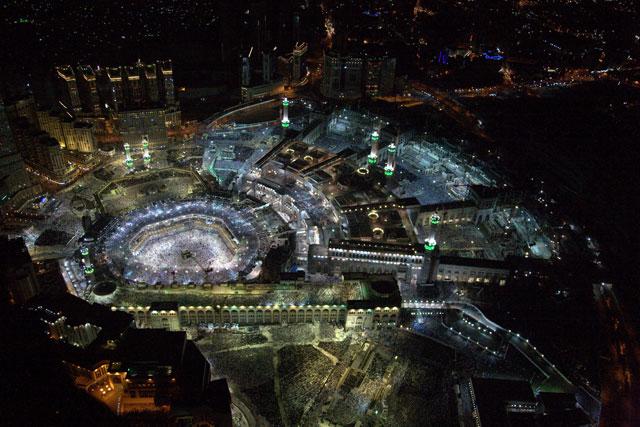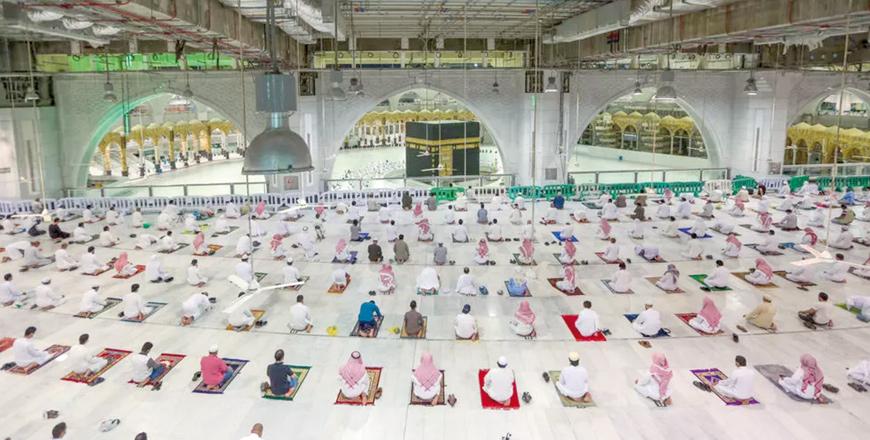You are here
Yemen pilgrimage draws crowds despite war, coronavirus
By AFP - Mar 29,2021 - Last updated at Mar 29,2021
WADI HADRAMAWT, Yemen — A site in Yemen revered as the tomb of Prophet Hud has drawn vast crowds of Muslim pilgrims, despite an escalation in fighting and coronavirus cases in the war-torn country.
Thousands flocked to the site — known in Arabic as Qabr Nabi Hud — for the four-day pilgrimage which precedes the holy fasting month of Ramadan, after last year’s event was cancelled due to the pandemic.
In the Quran, Prophet Hud preached about the “one true God” during the pre-Islamic era to the Aad tribe, which lived in the border region between present-day Yemen, Oman and Saudi Arabia.
Most of the pilgrims today are from the city of Tarim, some 70 kilometres away, and follow Sufism — a mystical branch of Islam.
Sufism is frowned upon by some ultraconservative elements of Islam, and Yemen’s Sufis have in the past faced hostility from Sunni Islamist radicals.
But during this year’s gathering on March 21-24 they streamed towards the usually uninhabited pilgrimage site, carrying green and red banners symbolising the colours of Islam, and singing Sufi songs.
The site, thought to house the tomb of Prophet Hud, is one of several in the region where faithful believe him to be buried.
Worshippers walked through the tight alleyways separating the mud-brick houses until they reached a small white dome, reciting prayers and calling upon the prophets.
The pilgrims gathered around the dome believed to cover the tomb, and near where legend has it that the rocky hillside opened up for Prophet Hud so that he could escape from his enemies.
The site, which had been difficult to access in the past, has been developed over the years to accomodate worshippers, whose numbers have not diminished despite Yemen’s long war.
Over the past decade, the number of buildings that can accommodate pilgrims has increased, and authorities have also paved many of the roads, putting up street lights and fences to protect the holy site.
New COVID wave
Tens of thousands of people — mostly civilians — and millions of others have been displaced in Yemen’s conflict that erupted in 2014 between the Saudi-backed government and the Iran-aligned Houthi rebels.
The impoverished country has since been plunged into what the United Nations calls the world’s worst humanitarian crisis.
Marwan Muharrem, a pilgrim from northern Ibb region, said he was happy with the “quality of services and facilities offered to the faithful” on site, but seemingly no COVID measures were enforced as people walked side-by-side with no masks.
Monasseb Habachi, head of a religious association, said the pilgrimage was performed in “the tradition of Prophet Mohammed”, who — according to the scholar — recommended the voyage to pay tribute to the prophets.
Habachi said the event usually attracts worshippers from across the region as well as Muslims from Asia. But with the pandemic and the conflict in full swing, it was difficult for large numbers of people from abroad to take part.
On Saturday, aid group Doctors Without Borders warned the number of critically ill COVID-19 patients is rising across Yemen — where testing is scant and hospitals are ill-equipped to test for patients’ cause of death.
Yemen is currently registering approximately 100 new coronavirus cases per day, with the real number likely much higher. The country of about 30 million has so far officially registered more than 4,000 cases, including over 850 deaths.
Related Articles
MECCA, Saudi Arabia — The biggest Hajj pilgrimage since the COVID pandemic began kicked off on Wednesday, with hundreds of thousands of most
RIYADH — Eighteen pilgrims have been injured in a stampede near Islam’s holiest site, Saudi media reported on Saturday, as the kingdom conti
MECCA, Saudi Arabia — Saudi Arabia opened on Sunday Islam’s holiest site for prayers for the first time in seven months, and expanded the um

Opinion
Apr 09, 2025
Apr 08, 2025
- Popular
- Rated
- Commented
Apr 08, 2025
Apr 09, 2025
Newsletter
Get top stories and blog posts emailed to you each day.

















